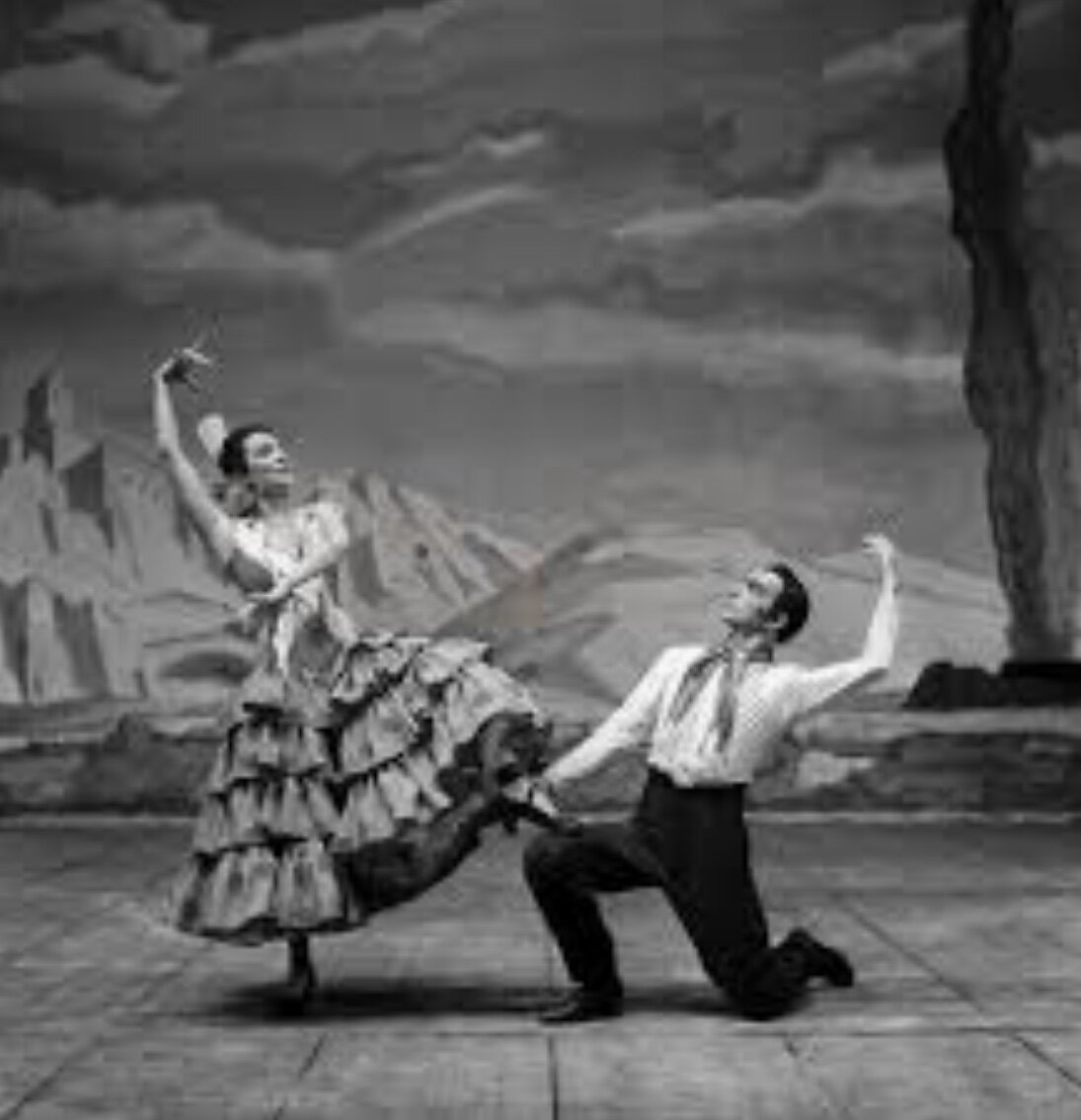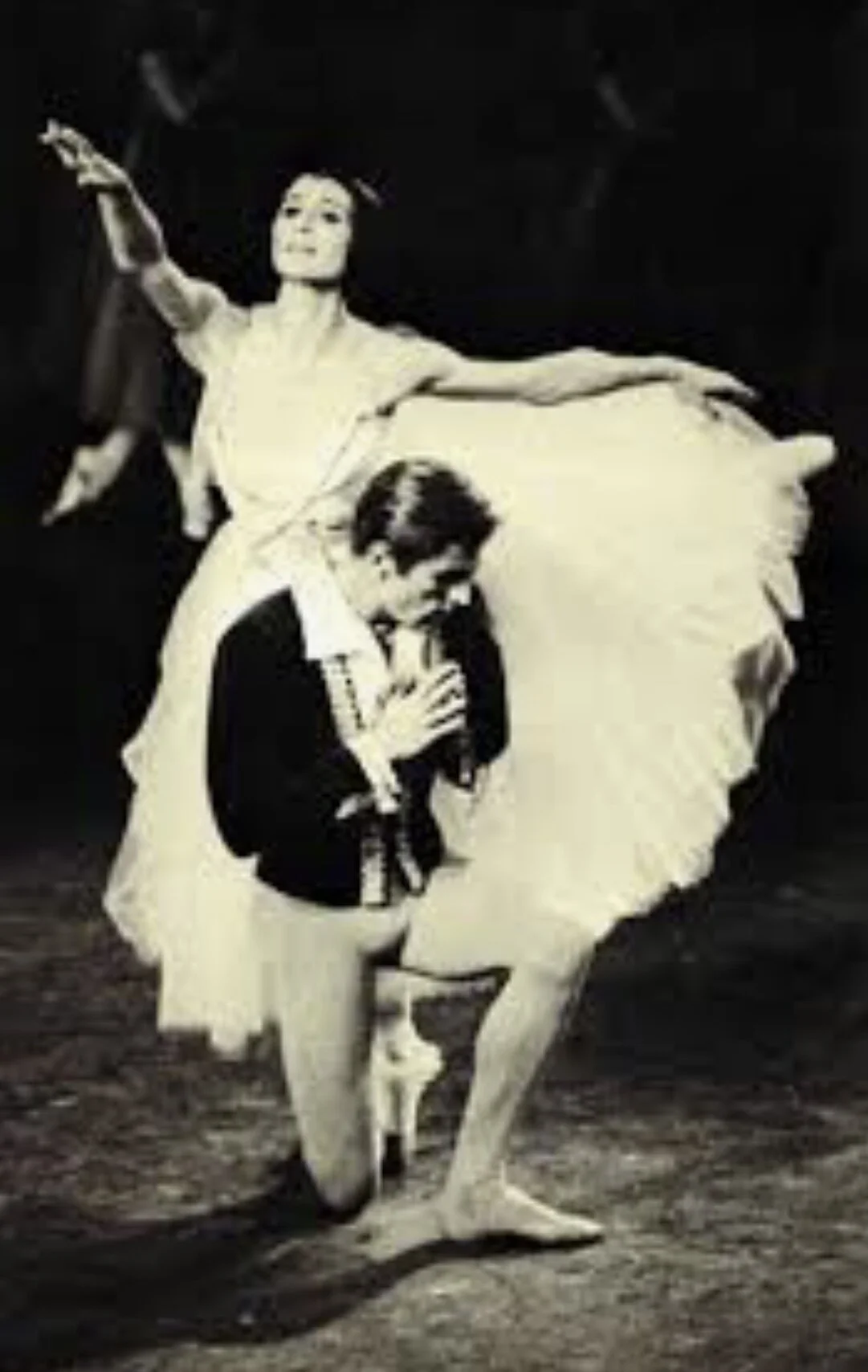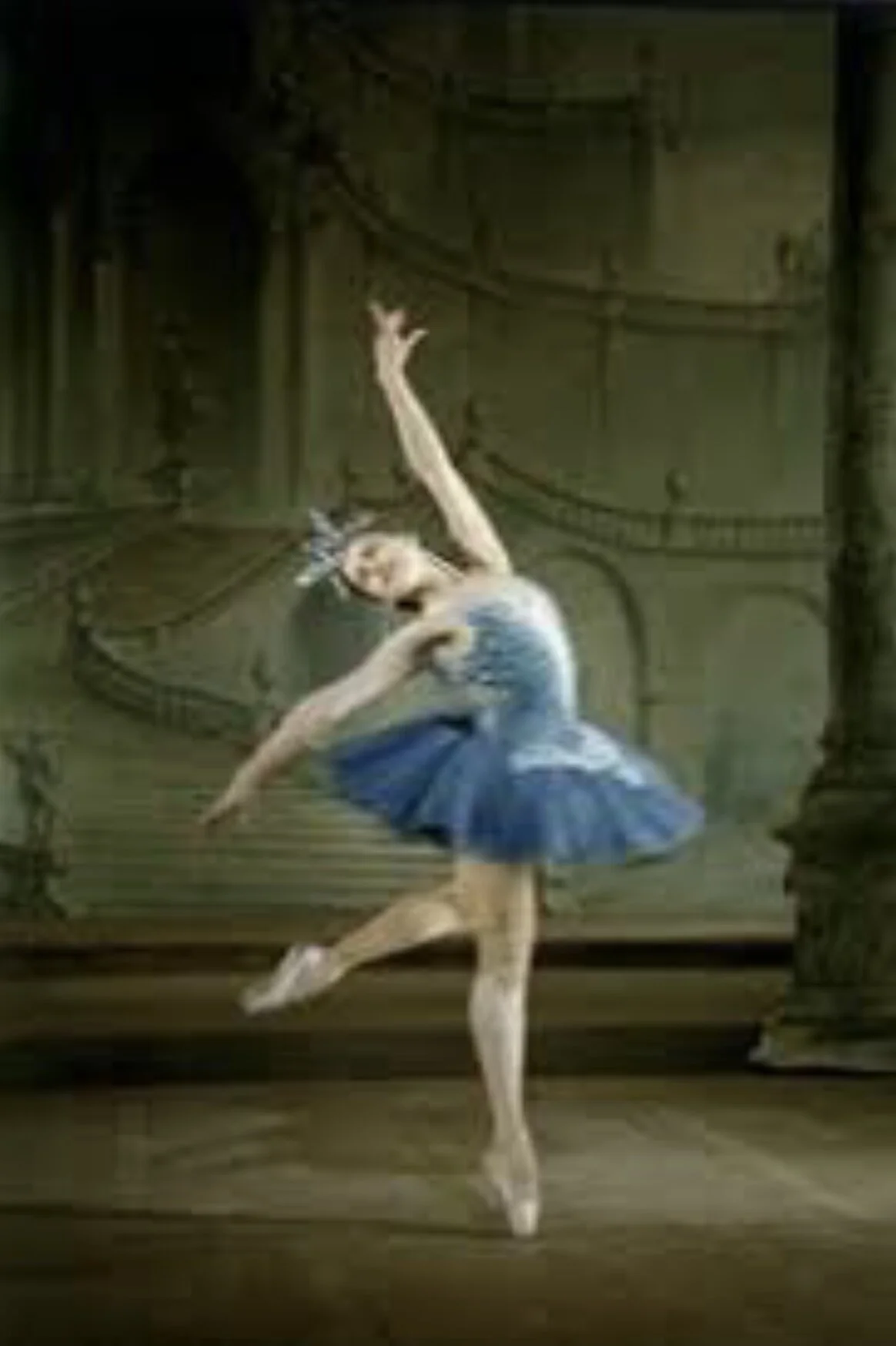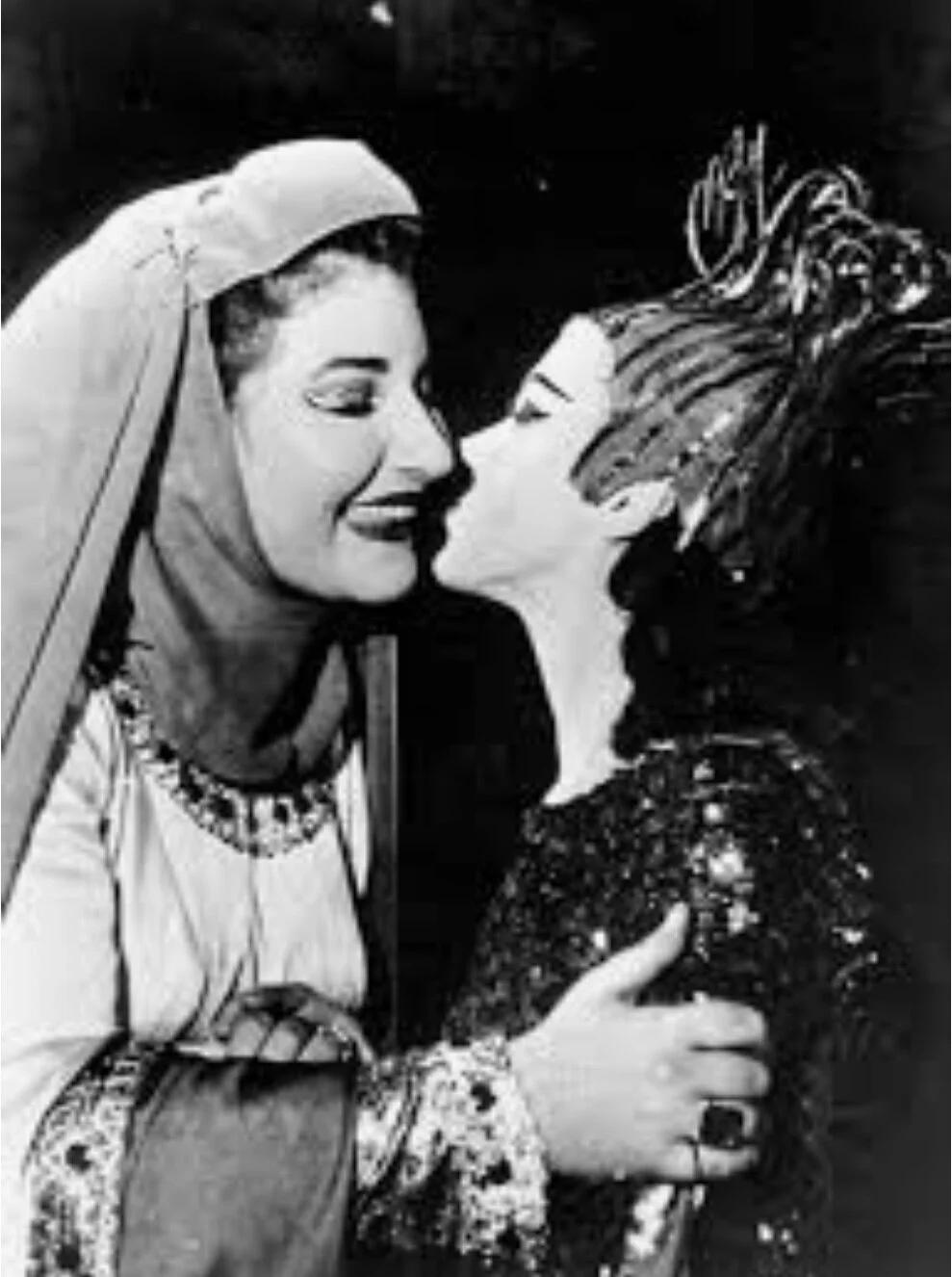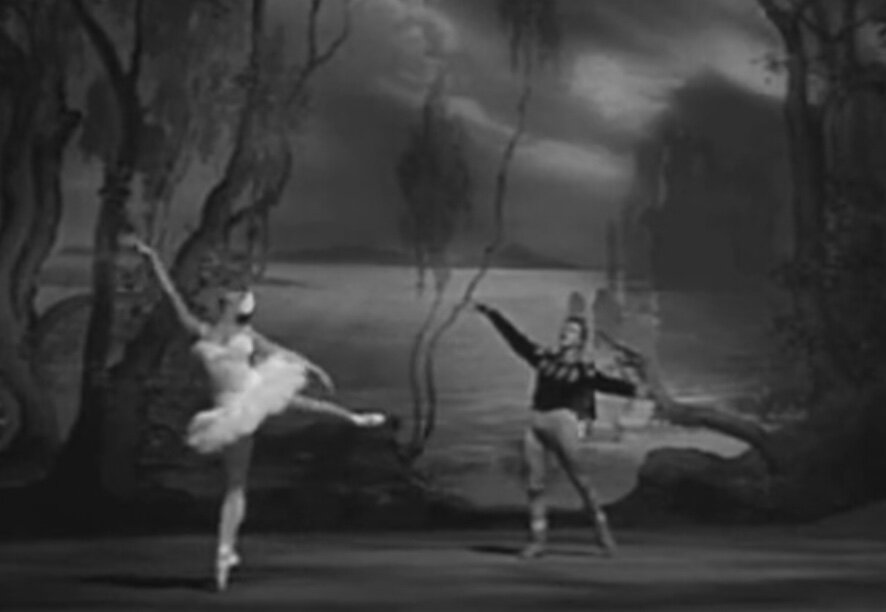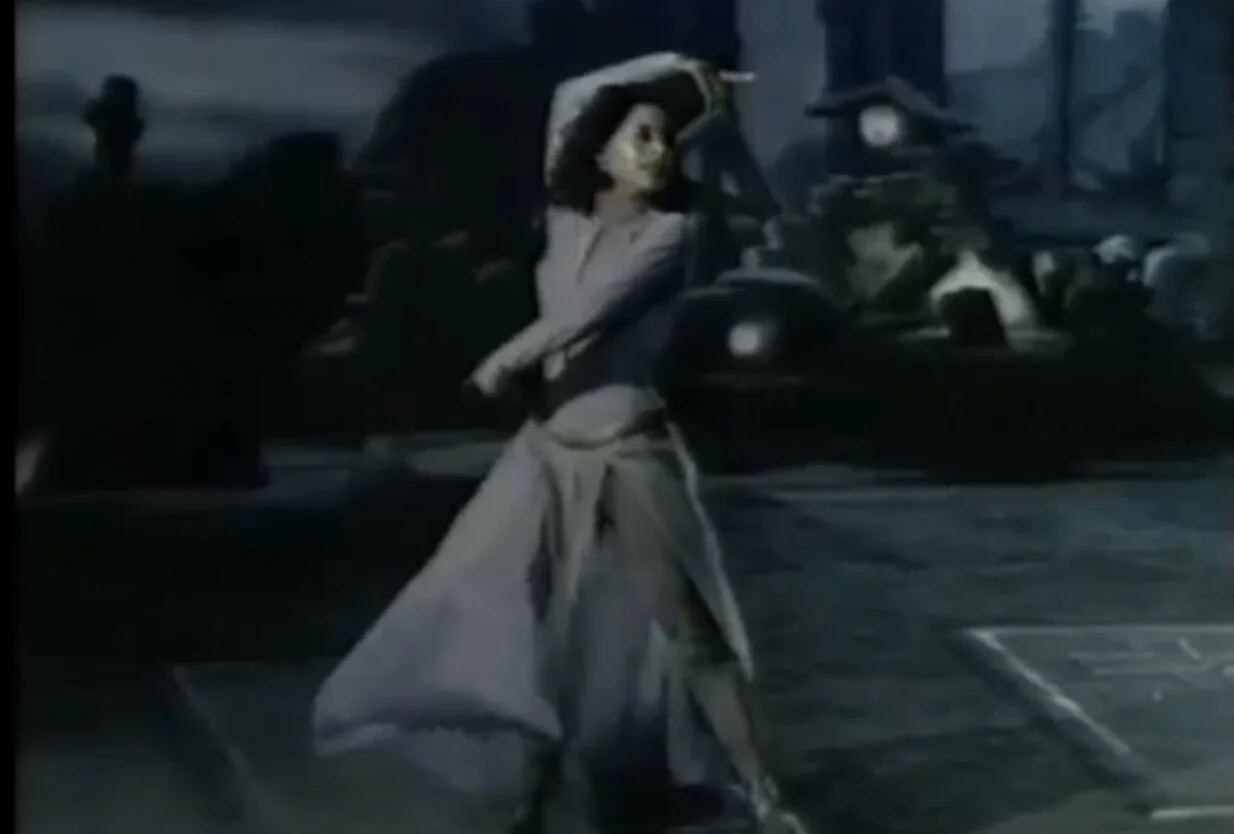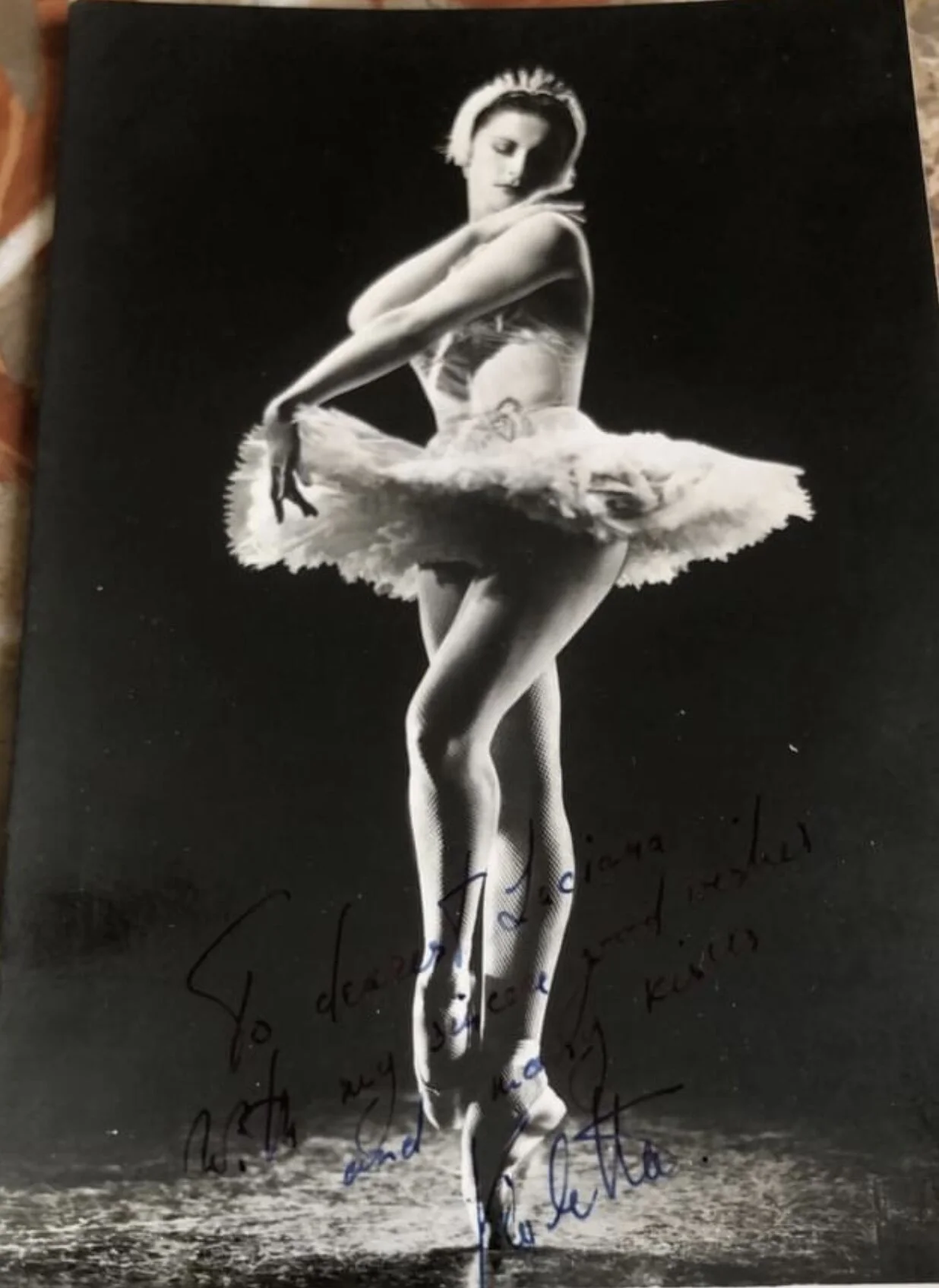Deaths of three ballerinas in Italy in two consecutive days: Luciana Novaro; Violetta Elvin; Carla Fracci.
It’s startling to realise that three historic ballerinas all died in Italy on May 26-27: Luciana Novaro (b.1923) on Wednesday 26, Violetta Prokhorova Elvin (b.1923) and Carla Fracci (b.1936) on Thursday 27. All three danced at La Scala, Milan. Of the three, Elvin alone was not Italian by birth; but Italy had been her home for over sixty years.
* * * *
Novaro, born in Genoa, trained at La Scala’s school; she rose until she became a principal dancer of the La Scala company between 1941 and 1956. Specialising in Spanish and character dance, she performed beside Leonide Massine and Serge Lifar, performing choreography by both of them (photograph 1 shows her in Massine’s “Tricorne”), by Aurel Milloss, and by Margherita Wallmann. In 1950, Massine selected her to dance the Chosen Maiden in his version of “The Rite of Spring”(“La Sagra della Primavera” - see photograph 2) she thus inherited a role he had also given to Lydia Sokolova in 1920 and to Martha Graham in 1930.
She became a choreographer, often for opera. She worked for many years at the Verona Arena, the Vienna State Opera, and La Scala, with individual creations also in São Paolo, Venice, Florence, and elsewhere. At La Scala, she made the dances for Luchino Visconti’s legendary 1955 production of Verdi’s “La Traviata”, conducted by Carlo Maria Giulini and starring Maria Callas. The next year, 1956, she created a role for the young Fracci, in Gian Carlo Menotti’s “Sebastian”. She collaborated with Stravinsky on a new staging of “Card Game”; she collaborated with Massine on “Fantasmi al Grand Hotel”, herself providing the idea, on which she collaborated with novelist and painter Dino Buzzati and composer Luciano Chailly.
In the years 1962-1964, she was director of the La Scala Ballet School. The Milan-based writer Graham Spicer writes - in his invaluable blog gramilano.com , from which I derive much of the above information, “I can say from personal experience that she was extremely generous with young dancers at the private dancing school that she ran in later life, often refusing payment for the use of a rehearsal room or coaching. She would give grants to students with financial difficulties, and arranged free acting lessons for all her students, a competent of dance she considered essential; in fact, directing was another of her talents.”
* * * *
Spicer was yet better acquainted with Fracci; I recommend his obituary of her, not least for the many personal details he provides from his friendship with her. I confess that I came to Fracci from the opposite angle. When I came to ballet in the late 1970s, she seldom if ever danced in either London or New York. I became aware that the senior critics of my acquaintance in both countries did not admire what she had become in her thirties: those who objected complained of her feet and legs. There had been notorious Fracci Wars between her admirers and her detractors in the early 1970s, but I was assured by even her detractors that she had been wonderful in her youth.
Later, she often related how she had been inspired by watching Margot Fonteyn’s Aurora in “The Sleeping Beauty” (and by watching how even then, at the height of Fonteyn’s international celebrity and technical glory, she was being corrected by Frederick Ashton for a little finger that was too straight). For a 1958 production of Gluck’s “Orfeo ed Eurydice” at La Scala, Milan, Ashton choreographed a Dance of the Blessed Spirit for her, to the famous flute solo. She was in her early twenties. In 1959, she danced some Giselles with London Festival Ballet that made an immense impression.
Her most prestigious years were in the 1960s and 1970s. John Cranko created his original version of “Romeo and Juliet” in Milan with her as Juliet in 1962. She often danced with Rudolf Nureyev; and her partnership with Erik Bruhn (photograph 3), especially in her seasons with American Ballet Theatre, was idolised.
I saw her dance only once, in autumn 1989, when she was fifty-three and had little dance power left. In later years, I became aware that at least one film of her Giselle seemed definitive to some viewers; I respected that view, while not counting her among the most remarkable of the many past Giselles we can see on screen. Many - including people much younger than I - have been more touched by footage of her dancing than I have been as yet; here’s hoping the Fracci magic will descend on me before long. It has been impressive in recent days to read the tributes paid to her by a wide range of younger dancers who loved her: Nina Ananiashvili, Ashley Bouder, Alessandra Ferri, and more.
* * * *
Violetta Elvin, as she was widely known, was not a dancer I either watched or met. But some photographs and a few films of her - some of them live - have left a powerful impression on me. And three of the roles created on her, enduring in repertory, make me feel well acquainted with her style.
Beginning as Violetta Vasilievna Prokhorova - her birthdate has often been wrongly given as 1924; I’m grateful to Graham Spicer for sharing with me information from her son that 1923 is the correct date - she became one of three Moscow-born ballerinas who trained together at the Bolshoi School: each was destined for reach stardom in a different leading company. She and Inna Zubkovskaya, who was to become a luminary of Leningrad’s Kirov (Mariinsky) Ballet, were born the same month and graduated together; they were two years older than Maya Plisetskaya, who was to become the Bolshoi’s assoluta after Galina Ulanova’s reign. Prokhorova never danced in the corps; she entered the Bolshoi at soloist level. Meeting the British architect Harold Elvin and marrying him in 1945, she was allowed to move with him to London.
She joined the Sadler’s Wells Ballet in time for its January 1946 opening at Covent Garden; on the company’s second night there, she made a sensation in Act Three with the Russian amplitude of her dancing as Princess Florine (photograph 4). That role - partnered by the Bluebird in his pas de deux - was to be a calling-card of her career for the next ten years with the Sadler’s Wells Ballet: she danced it in the company’s famous 1949 season at New York’s Metropolitan Opera House (winning a bigger ovation than Moira Shearer did on opening night); complete live footage of her dancing of it with Brian Shaw was recorded on cine-film by Victor Jessen (and is now in the New York Public Library for the Performing Arts); she and Shaw are again seen dancing it in another film of the Sadler’s Wells Ballet “Sleeping Beauty”, made for American television in December 1955.
Over the ten years following the 1946 move to Covent Garden, Elvin became one of the leading ballerinas of the Royal Ballet, alongside Margot Fonteyn, Moira Shearer, Beryl Grey, Nadia Nerina, and Svetlana Beriosova. For many people, Elvin became the company’s best-loved and most-admired ballerina in the 1950s after Fonteyn. The word “ballerina” is wielded with intense subjectivity in the ballet world: I’ve met dancers and fans for whom even Moira Shearer and Beryl Grey were not true ballerinas, and for whom Nadia Nerina and Svetlana Beriosova only achieved true ballerinadom in the 1960s, but with whom Elvin left a deep and glowing impression.
She also became a favourite of Frederick Ashton’s. For him, she inherited the Fonteyn role in “Les Sirènes” (1946); she created the role of Fairy Summer in “Cinderella” (1948) and was the second interpreter of that ballet’s title role after Moira Shearer (she made a stronger impression than Shearer on the great critic Edwin Denby). She created the seductress Lykanion in “Daphnis and Chloë” (1951 - photograph 5); she succeeded Fonteyn as the female “Tiresias” in Ashton’s ballet of that name. She was one of the first four interpreters of the supremely taxing title role of “Sylvia” (1952); she was (as Queen of the Waters) one of the four ballerinas in “Homage to the Queen” (Ashton’s ballet for the 1953 coronation season - photograph 8); and she was one of the seven ballerinas in “Birthday Offering” (1956, the ballet marking the company’s twenty-fifth anniversary). Particularly the roles of Fairy Summer and Lykanion, and her “Birthday Offering” variation, tell us about the voluptuous qualities of her movement, her rich épaulement, her combination of fluency and attack, and the full involvement of her back.
When Léonide Massine staged “Le Tricorne” at Covent Garden in 1946, Elvin soon inherited the role of the Miller’s Wife from Fonteyn with generally greater success. When George Balanchine staged “Ballet Imperial” there in 1950, she quickly inherited its brilliant leading role and - unlike Fonteyn or Shearer, its first two interpreters there - kept on dancing the role for years. She was a noted Aurora in “The Sleeping Beauty” and Odette-Odile in “Swan Lake”. She also danced many supporting roles with great distinction; Victor Jessen’s live films, now in the New York Public Library for the Performing Arts, show her, in the 1949-1955 North American tours of the Sadler’s Wells Ballet, dancing not only Princess Florine in “The Sleeping Beauty” but the first Prologue fairy too; and, in “Swan Lake”, the Act One pas de trois in “Swan Lake”.
In December 1952, Elvin danced at La Scala, Milan, in a prestigious production of Verdi’s “Macbeth” conducted by Victor de Sabata: Maria Callas was Lady Macbeth, Elvin was Ecate (Hecate) in the ballet of the witches. (Photograph 6 shows her and Callas greeting each other happily at curtain calls.) She then stayed on at aka Scala, dancing the Furlana in Act One of a new production of Ponchielli’s “La Gioconda”, with choreography by Leonide Massine. Overall, however, Elvin’s career remained chiefly with the Sadler’s Wells company, both at Covent Garden and on its many tours, not least on its four long tours of North America in 1949-1955..
Her dancing can be seen in two full-length films from 1953. In the MGM “Never Let Me Go”, directed by David Delmer, Philip Sutherland (Clark Gable) is a Western reporter, based in Moscow, who falls in love with a Muscovite ballerina, Marya (Gene Tierney), and marries her. This sounds like Elvin’s own story, but Tierney’s ballerina Maria is detained in Stalin’s Russia until Gable/Sutherland can smuggle her out. First (photograph 7), however, we see her dance Odette in “Swan Lake”, partnered by Anton Dolin: Tierney is seen in closeup views, while full-length dance sequences show Elvin (though she remains uncredited). And in the British film “Melba”, directed by Lewis Milestone, Elvin - photograph 8 - dances alluringly Pauline Grant’s bizarrely inauthentic choreographic notion of Marie Taglioni (Taglioni and Melba were by no means contemporaries anyway). Also in 1953, Elvin danced in a television production of Mikhail Fokine’s “Les Sylphides” (1908/1909) with Alicia Markova, John Field, and Svetlana Beriosova; the ballet was introduced to viewers by none other than Tamara Karsavina, one of the ballet’s original cast.
In 1956, in the summer after she had created a variation in “Birthday Offering”, she married her second husband, Ferdinando Savarese, and retired completely from dancing. They had a son (Antonio Savarese), and lived in Vico Equense, on the bay of Naples, for the next sixty years. In 1996, Elvin returned to Covent Garden for the fiftieth anniversary of the Royal Ballet’s residence there, when surviving members of the 1946 company led the Act Three polonaise of “The Sleeping Beauty”. Pamela May, who had danced Princess Florine the night before Elvin’s debut, loved to relate how “We all looked with curiosity at this marvellous blonde woman with a grand fur draped over her and whose hair fell glamorously over one side of her face - and it was Violetta!”
Tuesday 3 November
1: Luciana Novaro in Leonide Massine’s “Le Tricorne” at La Scala, Milan
2: Luciana Novaro as the Chosen Maiden in Leonide Massine’s “La Sagra della Primavera” (“The Rite of Spring”) at La Scala, Milan
3. Carla Fracci and Erik Bruhn in “Giselle”
4: Violetta Prokhorova Elvin as Princess Florine in “The Sleeping Beauty” at Covent Garden
5: Violetta Elvin as Lykanion in Frederick Ashton’s “Daphnis and Chloë” with the Daphnis of Michael Somes
6: Maria Meneghini Callas greeting Violetta Elvin onstage at La Scala in curtain calls after the 1952 production of Verdi’s “Macbeth” conducted by Victor de Sabata. Callas was Lady Macbeth; Elvin was Ecate (Hecate), goddess of witchcraft.
7: Violetta Elvin (uncredited) as Odette in “Swan Lake” with Anton Dolin as Siegfried in the 1953 MGM film “Never Let Me Go”
8: Violetta Elvin as a wholly inauthentic Marie Taglioni as choreographed by Pauline Grant for the British film “Melba” (1953).
9: Violetta Elvin as Queen of the Waters in Frederick Ashton’s “Homage to the Queen” (1953).
10: Violetta Elvin, on her ninety-second birthday in 2015, at her home in Vico Equense, on the Bay of Naples, with the writer Raffaele Lauro, the author of a book about her life in Italy.
11: Violetta Elvin gave this photograph of her Odette to Novaro, signing it “To dear Luciana with sincere good wishes and many kisses, Violetta.” Novaro’s daughter shared this with Monica Bragagnoli, Novaro’s student and friend; I’m grateful to both women for this chance to reproduce this.
